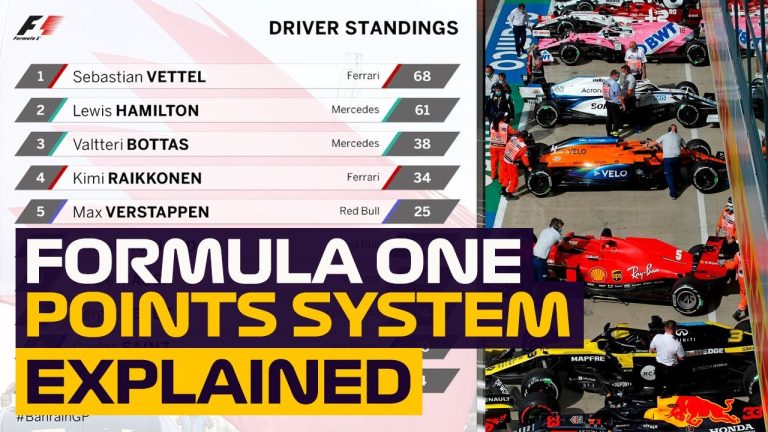Home » Unraveling the Formula 1 Points System and Historic Records
Unraveling the Formula 1 Points System and Historic Records

Unraveling the Formula 1 Points System and Historic Records
Immediately after the race, we as passionate Formula 1 fans take time to discuss how the drivers performed in terms of championship points and unravel the complex network of points leading to the ultimate world champion. It is therefore necessary to comprehend how these point systems came about given that each race presents a chance for any driver to improve his position on the table. We will now delve into the history books by taking a look at the beginning of Formula 1’s point system and some moments so crucial in its development.
Unveiling the Origins: The 1950s Era
From when this sport began its journey in 1950, Formula 1’s point system had been simple as it can be. Only five finishers got points out of seven Grand Prix races that existed with eight points going to the winner followed by six, four, three and two respectively. Also there was a single bonus lap available for one who made fastest lap. Nevertheless, not all positions counted towards final championship placings till 1959.
Evolution of Scoring: 1960s to 1980s
The early sixties however saw another tweak in scoring although it lasted for just a short while when no extra points were being awarded to fastest lap but it started giving one more point to sixth place person. Between 1961 and 1990 however, standardized scorecard gave nine marks for top spot gradually decreasing it up to one for sixth place finishes. Notably also, there was a change in number of races which were considered in championships which included elimination of two worst results by drivers from rankings from1967 onwards thus creating an ever changing environment.
Embracing Change: 1991 and Beyond
In 1991, FIA ushered into effect new rules that changed everything regarding distribution of points earned during GP races such that all GPs became relevant and none of them could be left put considering these changes Hamilton Heikki Kovalainen’s teammate Jenson Button McLaren. The era of Schumacher dominance in 2002 marked the peak of this scoring system as he had obtained an astonishing amount of 144 out of the maximum 170.
Modernization and Adaptation: 2010s Onward
The sport changed dramatically in 2010, trying to bring in some vitality into it by introducing a complex points system where top ten finishers received scores. It is important to note that the winner would get twenty-five points with other positions getting decreasing increments. This contemporary framework plus occasional adjustments such as adding extra marks for fastest lap in 2019 shows how Formula One remains a force for innovation and relevance in modern times.
Redefining Excellence: Records and Milestones
Formula One has seen a number of extraordinary seasons such as Lewis Hamilton’s historic season and Max Verstappen’s victorious campaign in the year 2023. This record by Verstappen who scored an amazing 92.7% is what represents skill, strategy and changing point systems.
Conclusion: The Significance of Scoring Systems
The development of its point structure across time speaks volumes about Formula 1 relentless quest for perfection as it treads along the tight rope between tradition and progressiveness. Scoring systems have been responsible for crowning champions while immortalizing great rivalries throughout seven decades, from the uncomplicated nature during 1950s to today’s complexities making Formula 1 stand out as motorsport zenith generators





